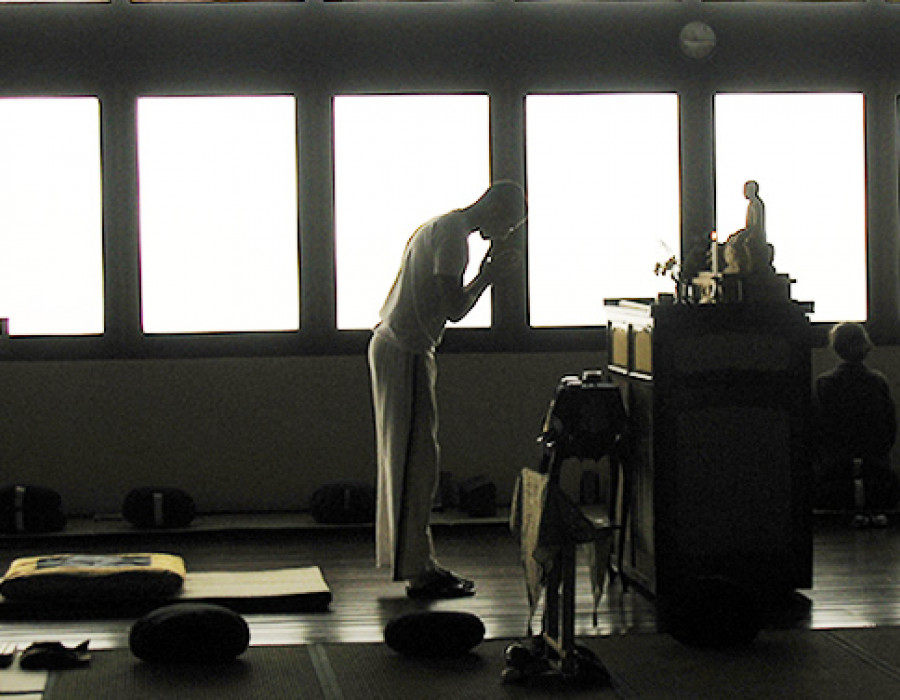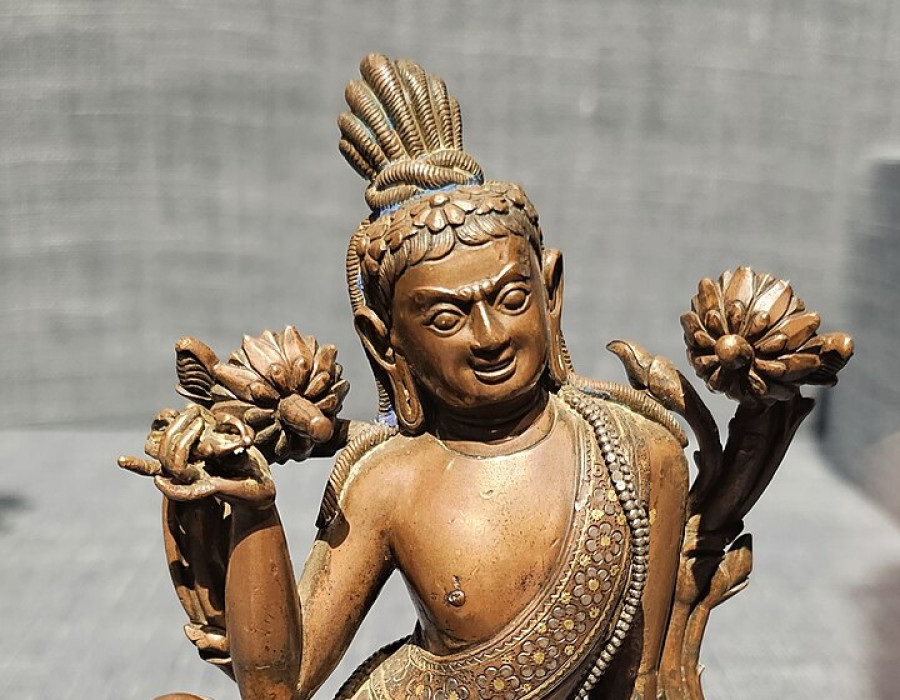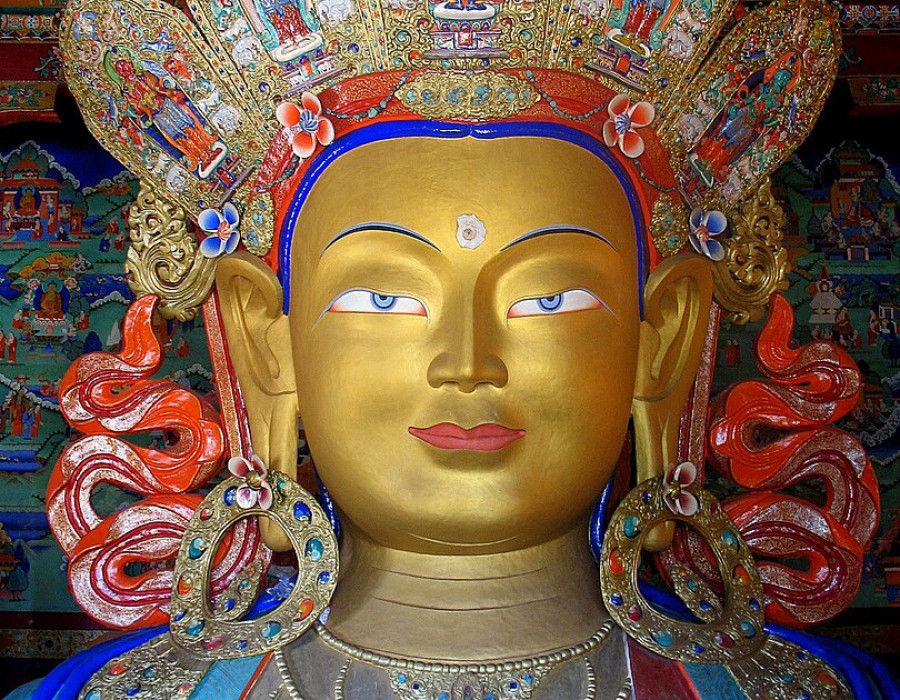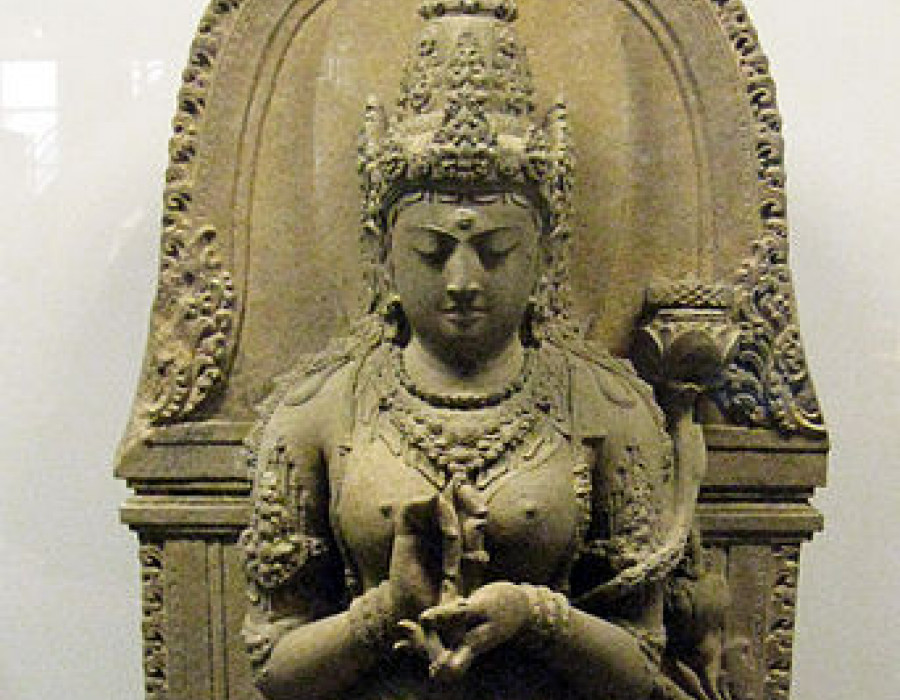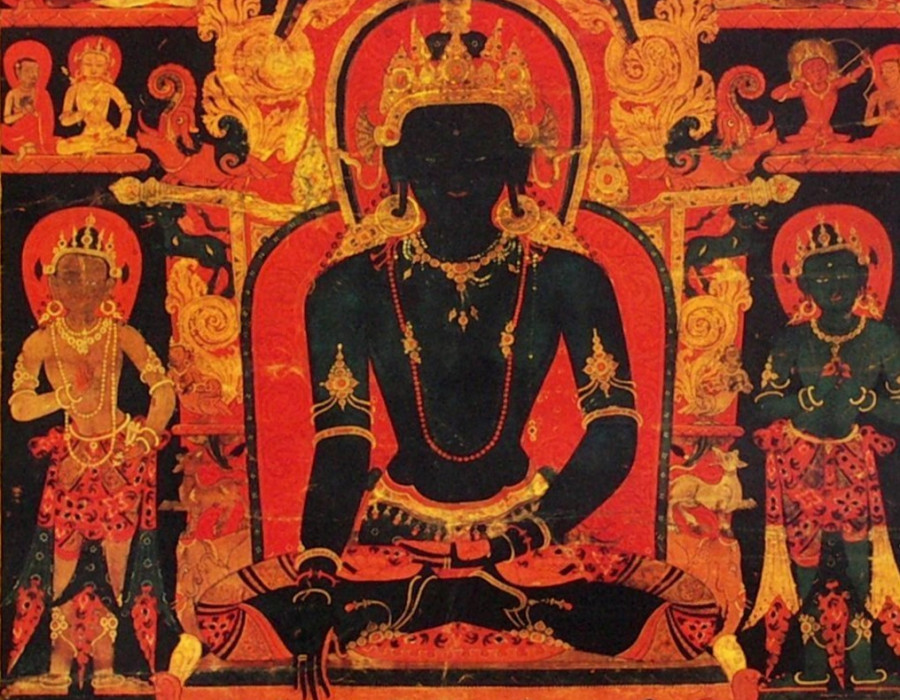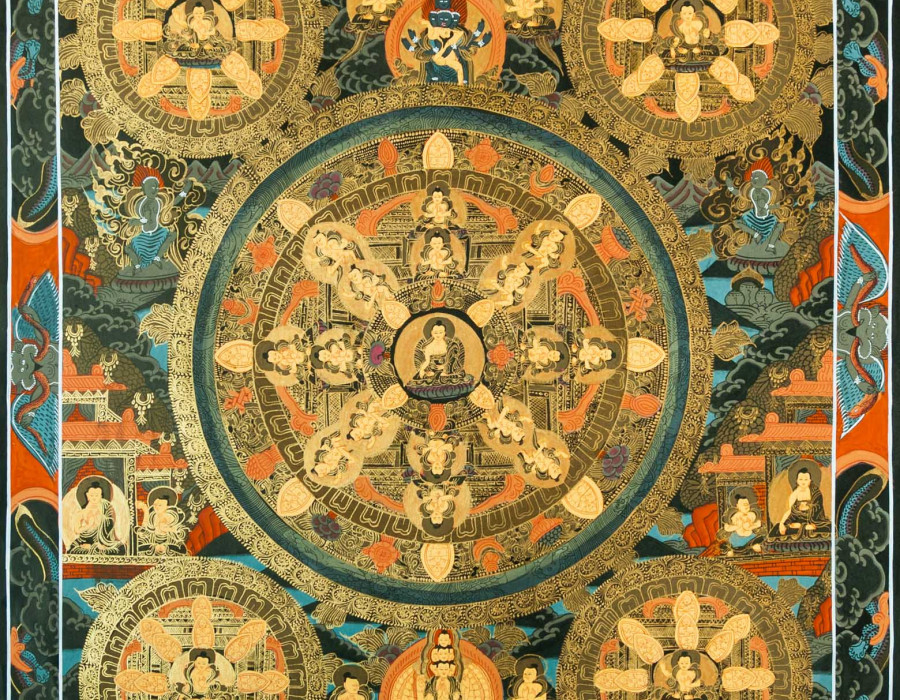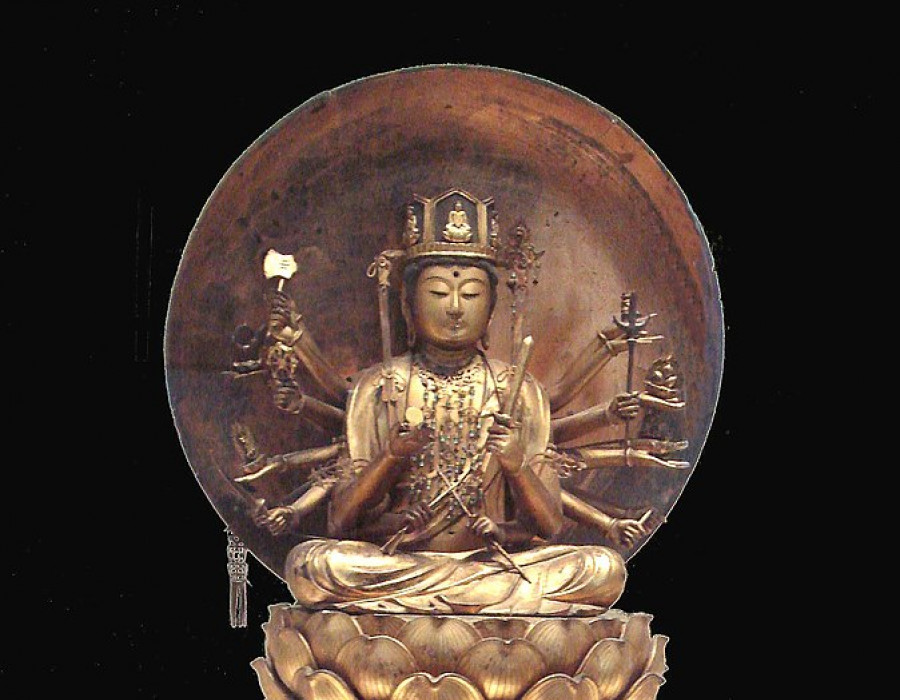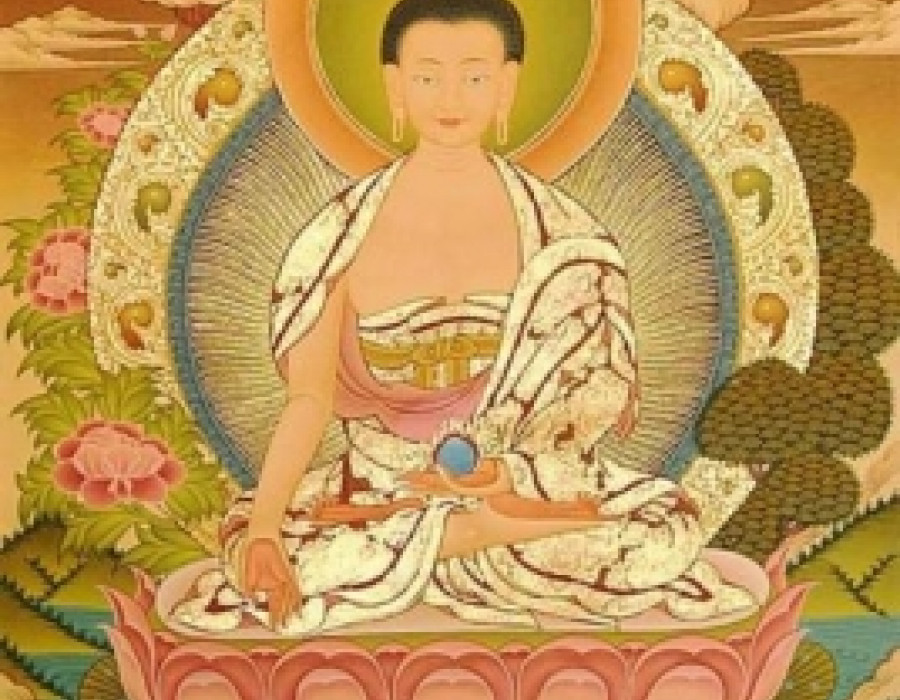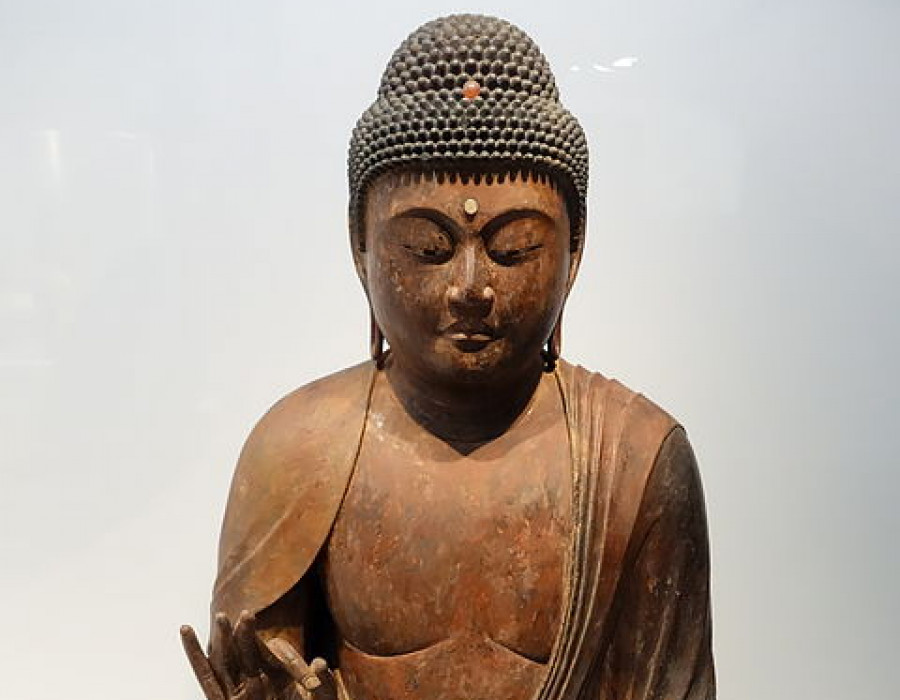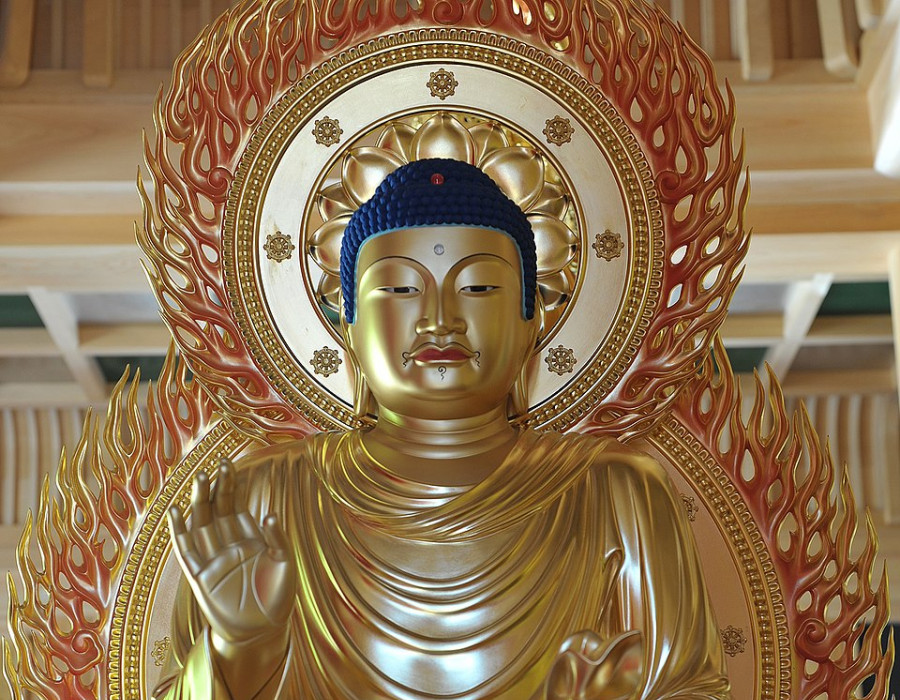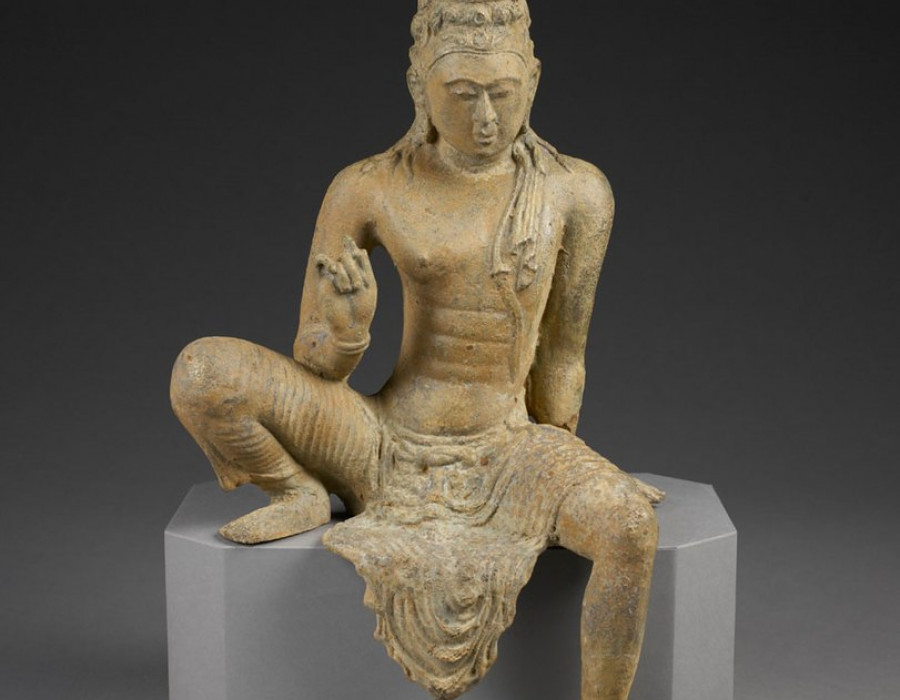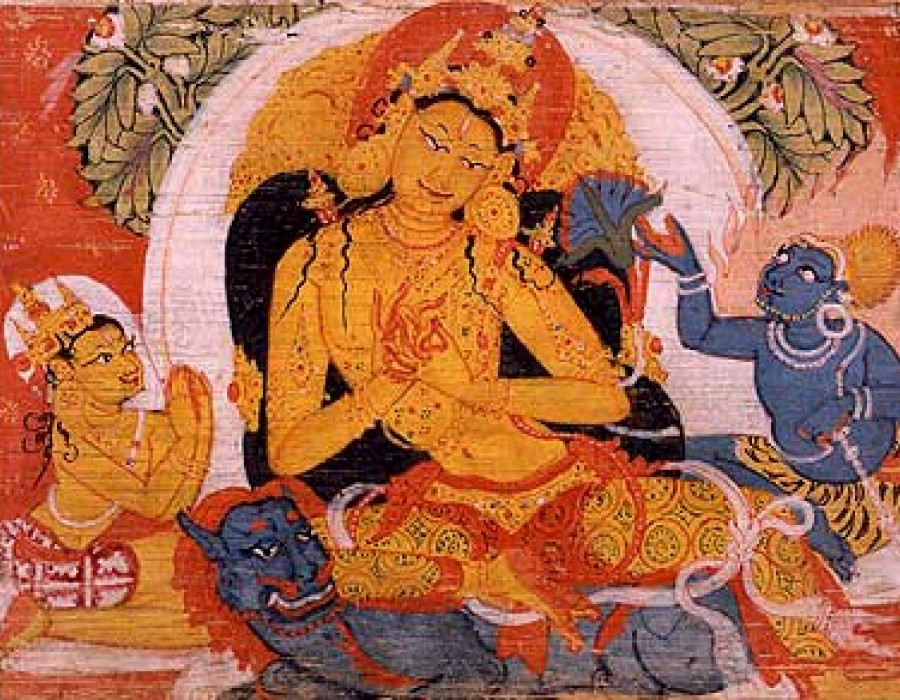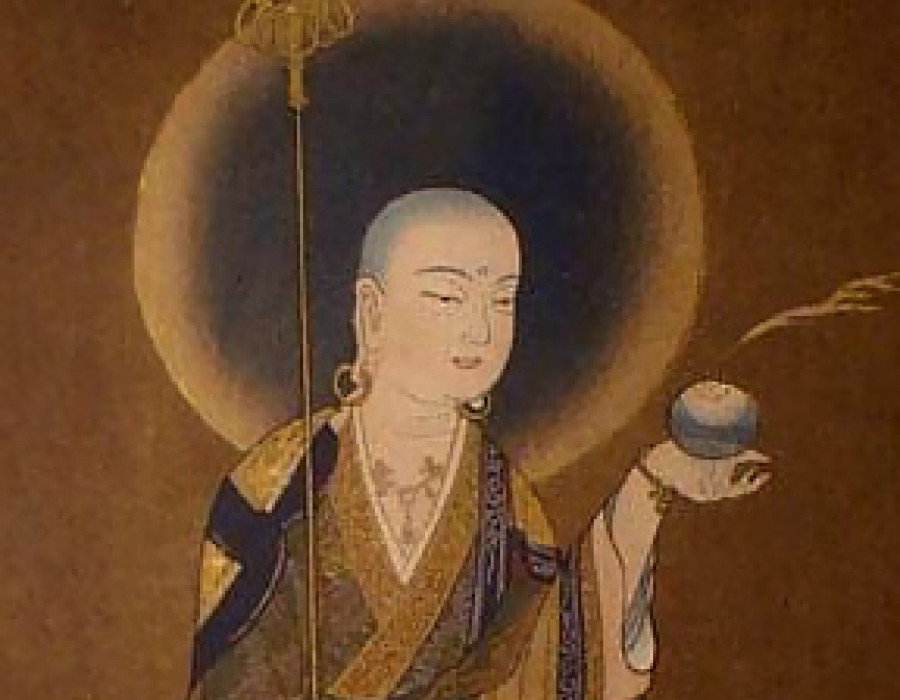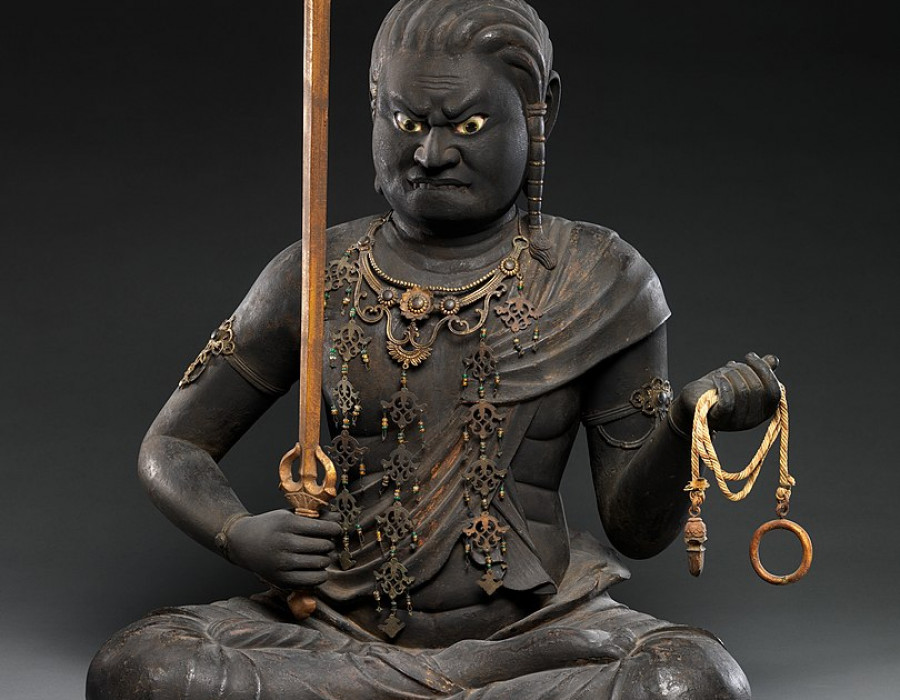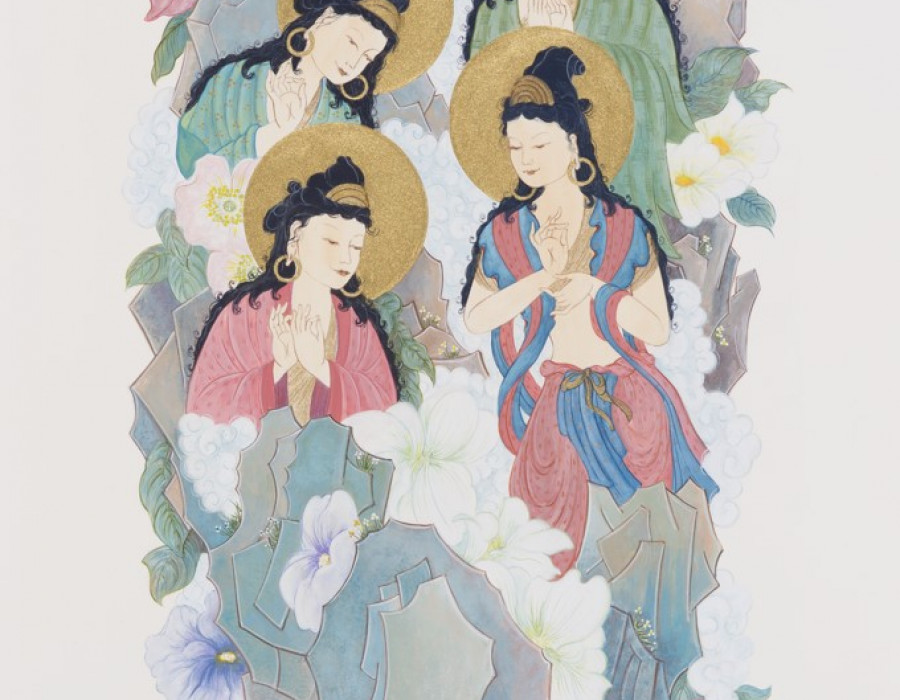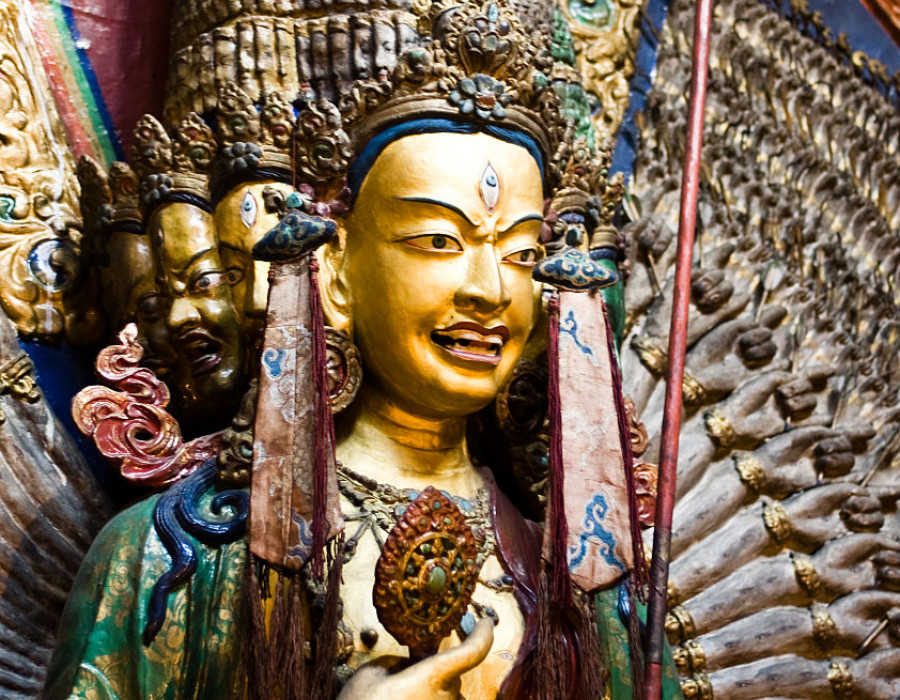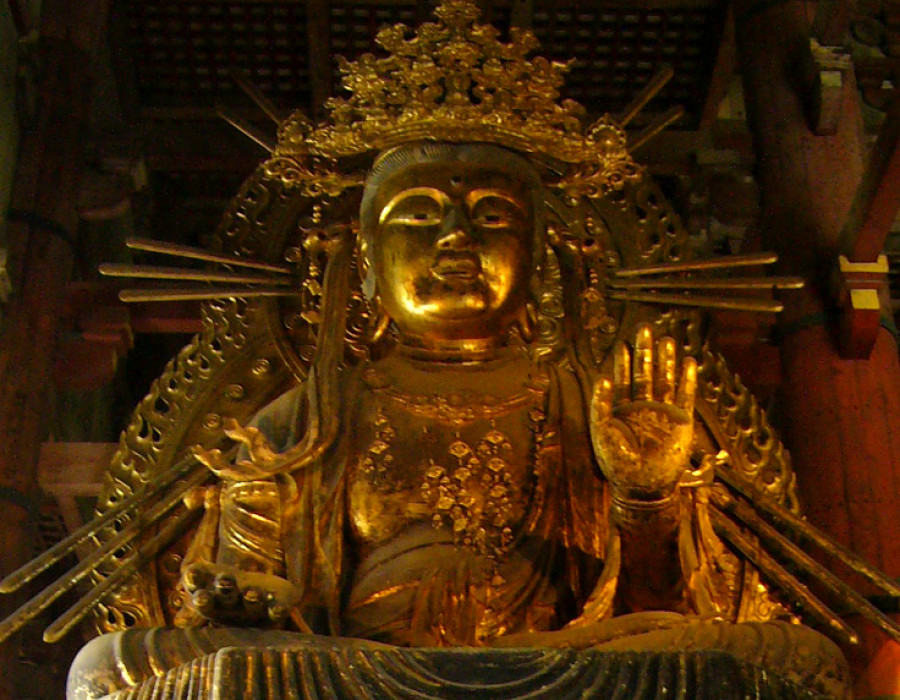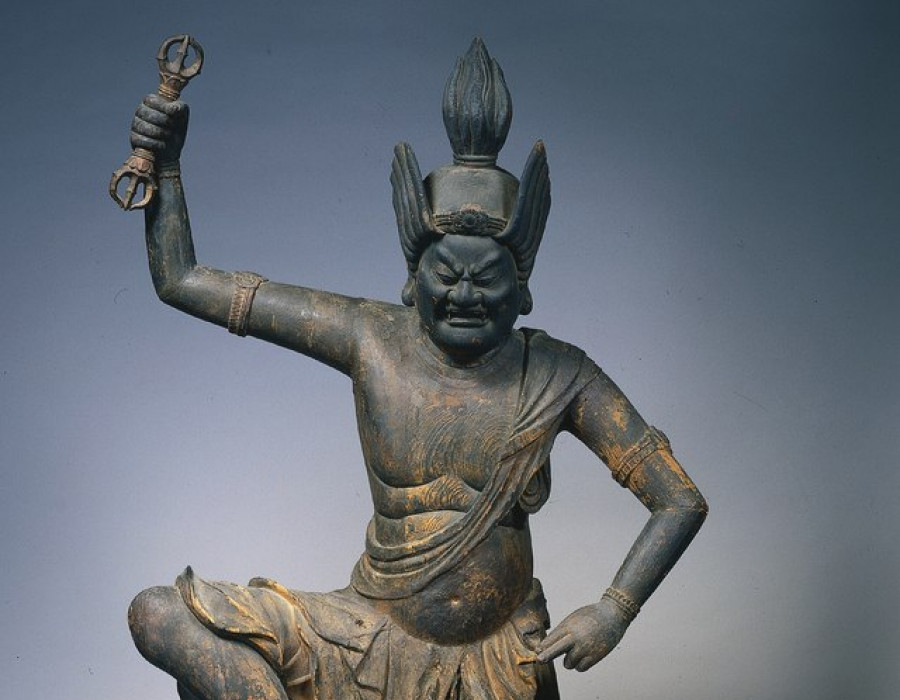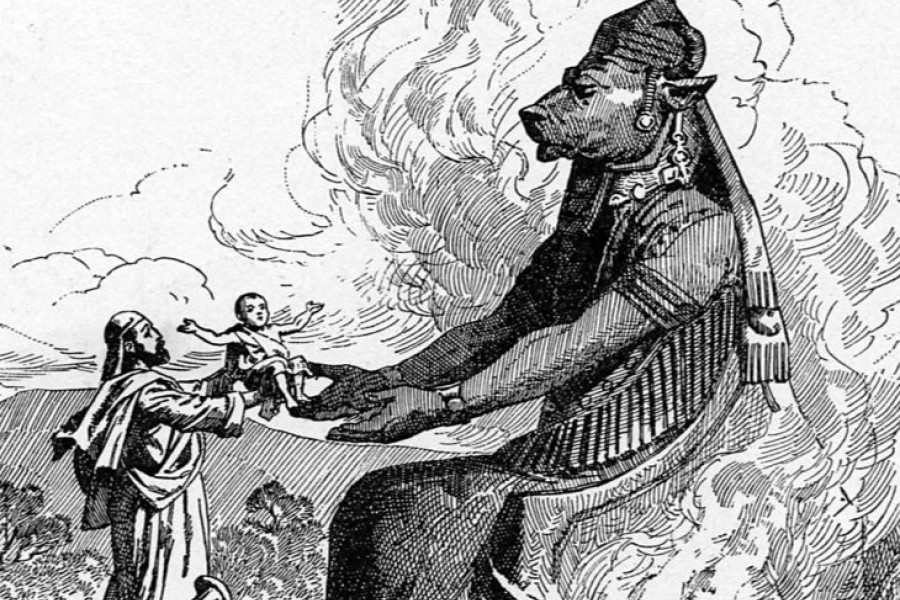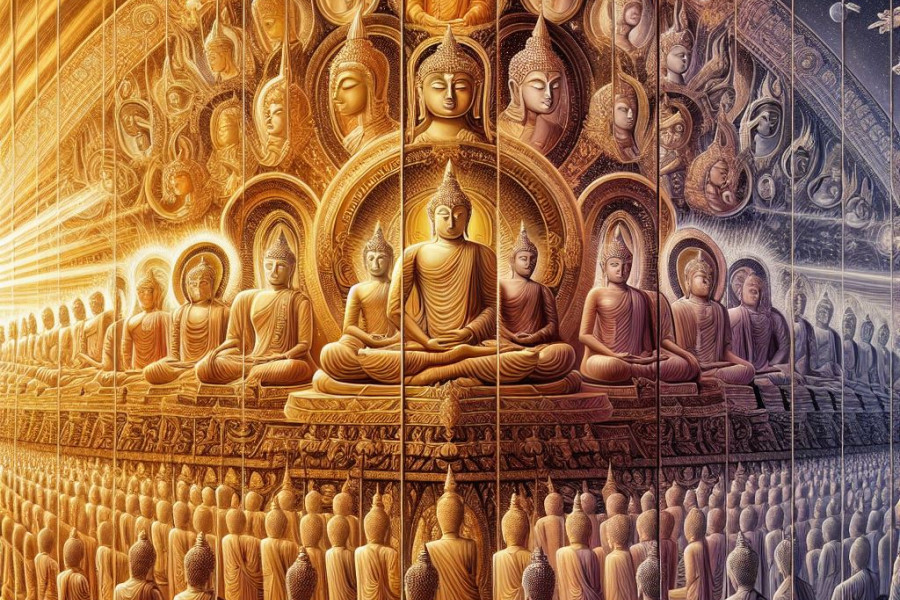
Martin Goodson
Manjushri
The Way of Devotion
Manjushri is the bodhisattva that represents clear seeing and wisdom. With his sword in one hand he cuts through delusion, with the The Great-Wisdom Sutra in the other, he teaches the emptiness of self nature.
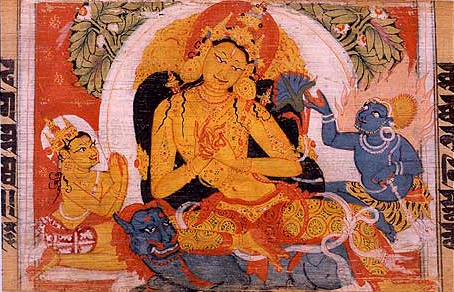
Manjushri and his attendants
By Asia Society created the file. Artwork created by an anonymous ancient source. - https://commons.wikimedia.org/w/index.php?curid=11441578
Manjushri is one of the four Great Bodhisattvas of Mahayana cosmology, along with Avalokiteśvara, Kṣitigarbha and Samantabhadra. Of the four of them, he is considered the oldest by modern scholars.
.jpg)
Manjushri with sword and sutra, sitting on a lion
By Kamakura-period sculptor(s) (1185-1333); photo by Ogawa Kazumasa https://commons.wikimedia.org/wiki/File:Kishi
He has two main forms, with a number of slight differences in some countries, usually in the symbols he carries. His main form is that of a youthful prince with blue skin sitting on a blue lion holding aloft a flaming sword – used to cut through the bonds of ignorance. In his other hand he holds the stem of a blue lotus flower, upon which sits a copy of the sutra known as The Great-Wisdom Sutra in 8,000 Lines (prajñāpāramitā sutra). The central teaching of this sutra is sūnyatā or the emptiness of self-nature in all things. Thus he is known as the Bodhisattva of Wisdom. He also has a wrathful aspect known as Yamantaka the Lord of Death, who has six legs, six arms and six faces and sits on a water buffalo.
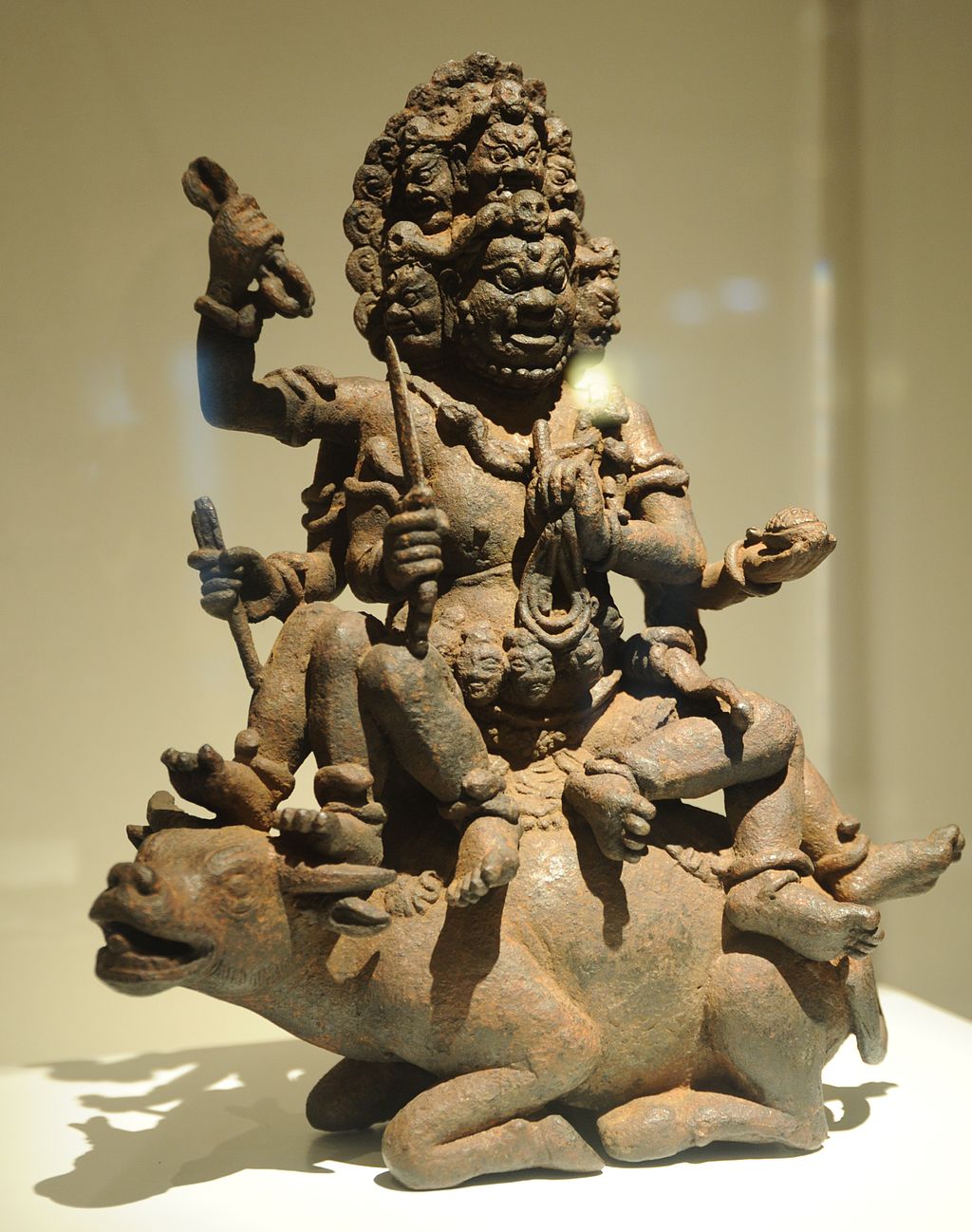
Yamantaka, Fear-Striking Vajra, Destroyer of Death
By Wonderlane from Seattle https://commons.wikimedia.org/w/index.php?curid=52291314
As a bodhisattva, he has vowed not to enter Nirvana until all beings have been saved. When he attains to Perfect Enlightenment he will be known as the Buddha ‘Clear Sight’, an epithet that emphasises the connection between the realisation of wisdom (prajñā) to unobstructed seeing (vidyā), the opposite of ignorance or delusion (avidyā).
He appears in a number of scriptures (sutras), notably The Lotus Sutra and The Vimalakirti Sutra. In the latter sutra he is the only one of the Buddha’s disciples who is prepared to go and debate with the layman bodhisattva Vimalakirti. The debate, which covers a number of chapters, allows both protagonists to expound in depth upon the Wisdom of Emptiness, one of the main teachings of the prajñāpāramitā cycle of sutras.
“Meanwhile, the Licchavi Vimalakirti thought to himself, ‘Manjushri, the crown prince, is coming here with numerous attendants. Now, may this house be transformed into emptiness!’”
Then, magically his house became empty. Even the doorkeeper disappeared. And, except for the invalid’s couch upon which Vimalakirti himself was lying, no bed or couch or seat could be seen anywhere.
Then, the Licchavi Vimalakirti saw the crown prince Manjushri and addressed him thus: ‘Manjushri! Welcome, Manjushri! You are very welcome! There you are, without any coming. You appear, without any seeing. You are heard, without any hearing.’
Manjushri declared, ‘Householder, it is as you say. Who comes, finally comes not. Who goes, finally goes not. Why? Who comes is not known to come. Who goes is not known to go. Who appears is finally not to be seen.’”
(The Holy Teaching of Vimalakirti translated by Professor Robert A. Thurman, published by Pennsylvania State University Press, Pennsylvania, US 1987).
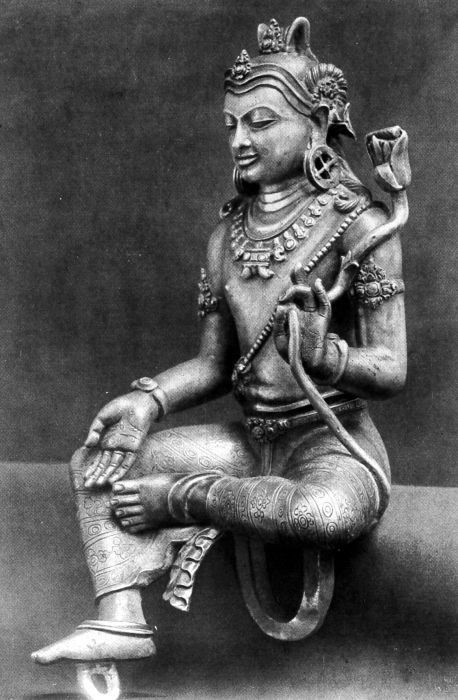
Manjushri in repose
By Tropenmuseum, part of the National Museum of World Cultures, CC BY-SA 3.0, https://commons.wikimedia.org/w/index.php?curid=8616208
Mahayana Buddhism tends towards an ambivalence when it comes to its own doctrines because it sees truth as being of at least two kinds. One is absolute truth, while the other a provisional truth. The provisional truth points to the absolute and should not be seen as either invalid or separate from the absolute, however neither should it be mistaken for the absolute truth.
In regard to this the Yogācāra school of Indian Mahayana Buddhism formalised a teaching that gave the Buddha three different bodies for teaching purposes, known as the Trikaya. The first body was the body of absolute truth, which is profound and transcendent. The remaining two bodies cover the provisional truth. One is the manifestation body, which refers to the Buddha’s physical body in life, which visibly taught the Dharma. The other body has various names, but is usually referred to as the ‘enjoyment’ body, or ‘bliss’ body, and is how the various truths appear in vision and meditation. It is this ‘body’ that includes all the representations of Buddha and bodhisattva images and that we can take, by extension, the sacred sounds (mantras), sacred gestures (mudras), hymns (dharanis), and images. This is the realm of the imaginal and creative forms that truth manifests in both physically and mentally, and that acts as a bridge between the transcendent and the immanent. The important point here is that the provisional truth embodies absolute truth.
Manjushri temple shrine
By Satdeep Gill - Own work, CC BY-SA 4.0, https://commons.wikimedia.org/w/index.php?curid=47695326
The mantra associated with Manjushri is:
oṃ arapacana dhīḥ (emphasis on the final syllable).
In his book on the Wisdom Sutras the scholar Edward Conze explains that the syllables of this mantra are a type of mnemonic for the wisdom of emptiness as follows:
A is a door to the insight that all dharmas are unproduced from the very beginning (ādya-anutpannatvād).
RA is a door to the insight that all dharmas are without dirt (rajas).
PA is a door to the insight that all dharmas have been expounded in the ultimate sense (paramārtha).
CA is a door to the insight that the decrease (cyavana) or rebirth of any dharma cannot be apprehended, because all dharmas do not decrease, nor are they reborn.
NA is a door to the insight that the names (i.e. nāma) of all dharmas have vanished; the essential nature behind names cannot be gained or lost.
The mantra is used to improve one’s own wisdom faculties as well as ability in debating, writing and memory recall, which are all skills used for teaching and spreading the Dharma.
The Way of Devotion | Martin Goodson
Dharma Centre
We have just launched our online Dharma Centre. All are welcome...
Join our Community!
